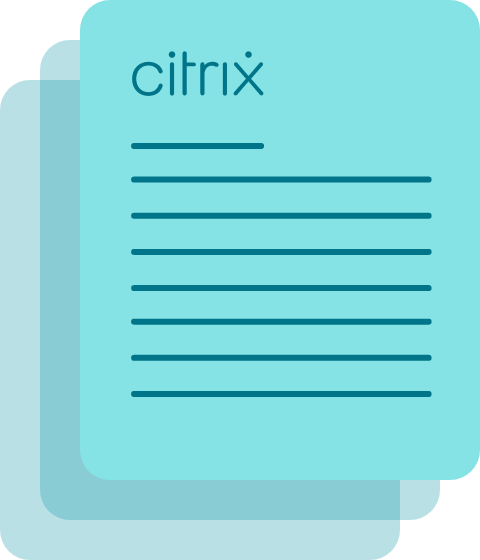Download the Citrix Workspace App
Citrix Workspace app is the easy-to-install client software that provides seamless secure access to everything you need to get work done.
A hypervisor is software that creates and runs virtual machines (VMs), which are software emulations of a computing hardware environment. Sometimes called a virtual machine monitor (VMM), the hypervisor isolates the operating system and computing resources from the virtual machines and enables the creation and management of those VMs. These virtual machines—simply, code operating in a server's memory space—enable administrators to have a dedicated machine for every service they need to run.
This small software layer is the most important component of virtualization technology, which comprises storage, desktop, operating system (OS), and application virtualization. Hypervisors also make server virtualization possible by allowing different operating systems to run separate applications on a single server while still using the same physical hardware resources. Virtualization is the basis of modern cloud computing, enabling scalability, security, and management of global IT infrastructure.
Explore additional hypervisor topics:
Hypervisors create a virtualization layer that runs between the OS and server hardware rather than between the OS and application. They isolate operating systems and applications from the underlying computer hardware, or the host machine, from the virtual machines that use its resources. By concealing the actual hardware resources of the physical server from the partitioned VMs, the hypervisor implies a common pool of shared resources, including CPU, storage, and memory, that can be shared among the guest VMs.
The hypervisor is then responsible for managing and provisioning pooled resources from the host’s hardware to guest VMs and for scheduling operations so VMs don’t overrun one another when using resources. By virtualizing and distributing host resources, the hypervisor enables the function of guest VMs, making them independent of the host hardware and enabling them to run their own programs.
Developed by IBM in the 1960s to enable partitioning, the more efficient use of resources within its mainframe computers, hypervisor technology matured and became a key element of the hardware virtualization that was added to PCs and servers. Hypervisors enabled Linux and Unix systems to expand hardware capabilities, improve reliability, and manage costs. Today’s hypervisors are available in two primary types.
Type 1 hypervisors, also called bare-metal hypervisors, run directly on the computer’s hardware, or bare metal, without any operating systems or other underlying software. They require a separate management machine to administer and control the virtual environment. Type 1 hypervisors are highly secure because they have direct access to the physical hardware with nothing in between that could be compromised in an attack. They allow for more resources to be assigned to virtual machines than are available, and since only the necessary resources are consumed by the instance, they are also highly efficient. These two important features make Type 1 hypervisors a central element in enterprise datacenters.
In addition to server operating systems, Type 1 hypervisors can also virtualize desktop operating systems. This is the foundation of virtual desktop infrastructure (VDI), which allows users to access desktop environments such as Windows or Linux that are running inside virtual machines on a central server. Through a connection broker, the hypervisor assigns a virtual desktop from a pool to a single user who accesses it over the network, enabling remote work from any device. Citrix VDI solutions deliver this functionality from both on-premises servers and the cloud.
Type 2 hypervisors, also called hosted hypervisors, run as an application in an operating system. They require the host operating system to perform their function like any other application, and the guest operating system runs as a process on the host while the hypervisor isolates the guest from the host. Multiple Type 2 hypervisors can be run on top of a single host operating system, and each hypervisor may itself have multiple operating systems. Type 2 hypervisors are simple to set up and enable quick access between applications running on the guest and host operating systems, but are not capable of running the complex workloads that Type 1 hypervisors run.
E-BOOK
See how the right virtual desktop infrastructure (VDI) solution can help you meet your business goals.
Hypervisors deliver a number of benefits to the data center, including:
